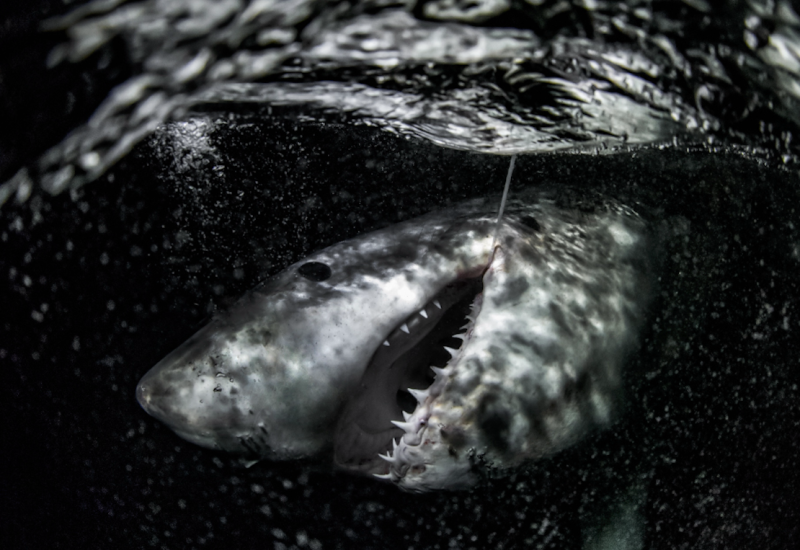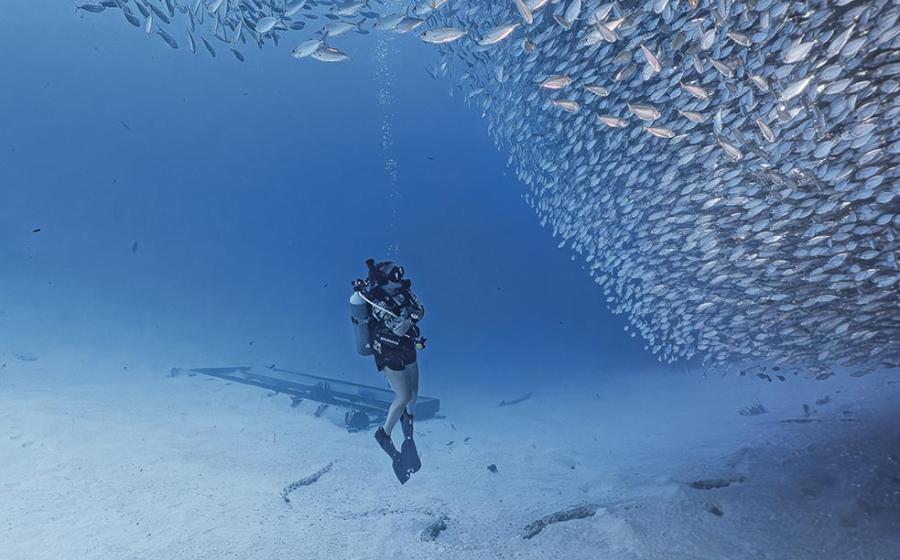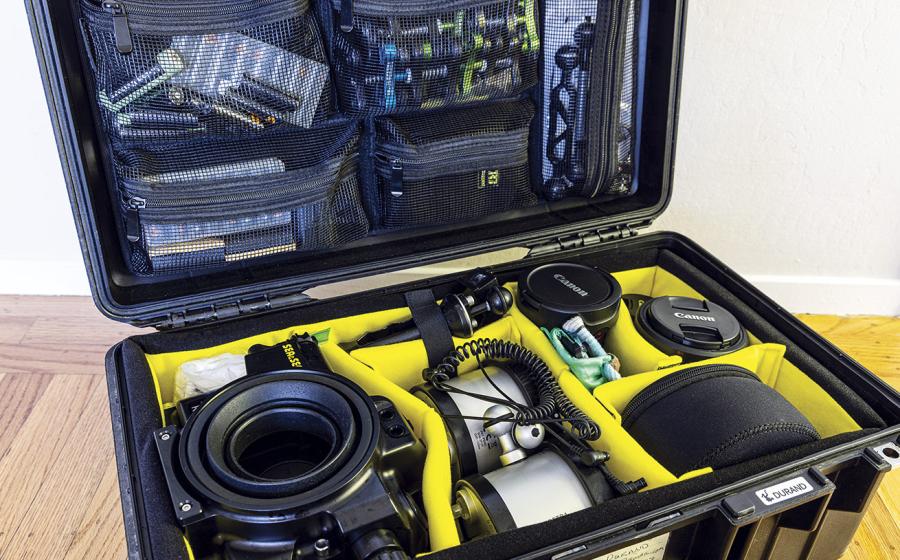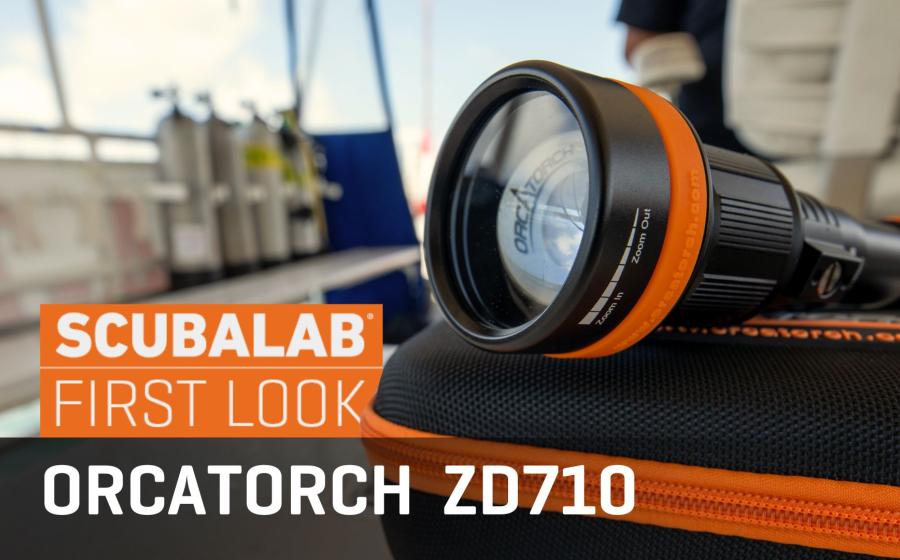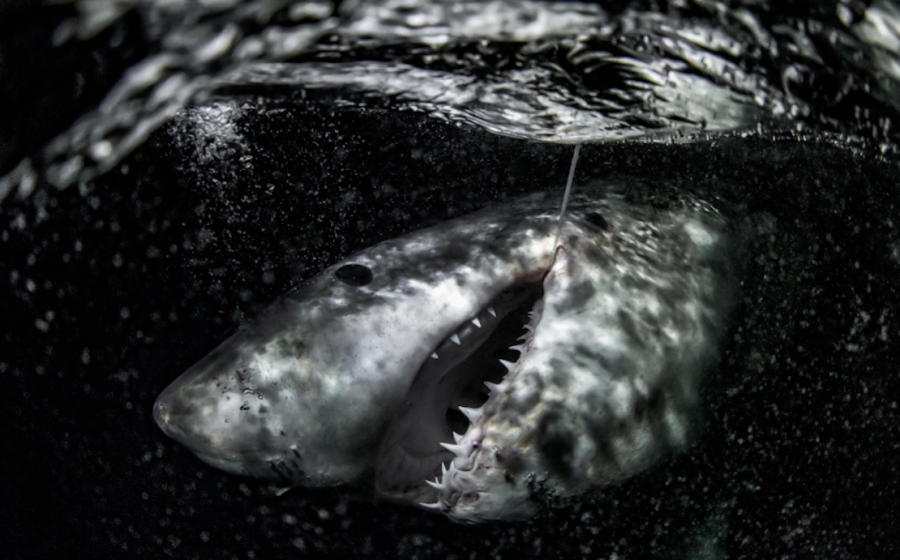Exploring the Falkland Islands' Flourishing Kelp Forests

Patrick WebsterTwo curious South American sea lions (Otaria flavescens) swing by to investigate the bizarre beasts blowing bubbles in their kelp kingdom.
⏰ 1600 hours
📅 March 12, 2024
📍 West Falklands, approx. 51°53'S 61°13'W
🌡️ 46ºF / 7.8ºC
The hand-held depth sounder says we’re 70 feet deep at the edge of the kelp canopy. This tiny piece of certainty makes me feel more at ease about our imminent plunge into the unknown. It’s our final dive here in the Falkland Islands before the long sail back to Patagonia, and I’m grateful to scratch the strong exploratory itch I’ve been feeling on this expedition one last time.
“No one has ever dived here before” is a common refrain in my line of work— most of the ocean has never been seen by human eyes, so it shouldn’t be that special a designation, but it’s still an undeniably exhilarating feeling.
There are no native terrestrial forests on the Falklands, only the lush water woods of giant seaweeds along their expansive shoreline. This archipelago of 700-some islands is situated right in the path of some of the windiest and wildest waters on the planet. The Falklands are, in effect, a microcontinent left behind from the days of Gondwana, when South America and Africa were nestled puzzle pieces. The oceanography here is dynamic, and the ecosystem is rich beyond measure.
Related Reading: 7 Liveaboards to Book if You Love to Learn
Photos of kelp forests in this little-dived part of the world are relatively rare, and on this journey, my dive buddies Kayvon and Nick and I will get to contribute to the small collection.
We dive in and fin over to the underwater forest. The sun is glowing brightly through the gemstone-hued water, the current sweeping the kelp columns to a 45-degree angle. Nick and I tuck into the reef to document the invertebrate community—multicolor shrimp, orange brittle stars, ochre sponges and peach tunicates create kaleidoscopic colors under the kelp canopy. Then—a strange sound. I look up and around to Nick. He points upward to the midwater: Kayvon is surrounded by a large pride of South American sea lions. He’s screaming at us through his reg to come join him and film them.
Suddenly, that’s not up to me. The bigger male aims directly at my camera, parking himself inches from my acrylic dome. He shakes his head side to side, back and forth—we must be the first humans he’s ever encountered underwater. A quick boop of the camera sends him reeling backward, then to the surface. He returns a moment later with his pinniped posse and thus emboldened, lunges forward, mouth as wide as he can open it. I snap my frames as he snaps his jaws at his own reflection. It’s an incredible encounter, but with our air winding down, we excuse ourselves.
Related Reading: Discovering Patagonia's Winged Comb Jelly
Sailing home to Ushuaia, Argentina, the desire to turn the ship around grows with every mile. If ever there were truly wild coastlines—seldom visited by local tribes, uninhabited until the colonial era and largely unexploited since—the Falklands might just be a prime example. To visit such a place is a privilege in a world made more accessible and ravenous than ever.
Bathed by consistently cold waters, Falklandic kelp has been comparatively resilient in the face of a globally warming ocean. It’s a place where, for now, the forest is as it has been in the past and continues to be, with dizzying lions patrolling the thickets, ready to pounce.

